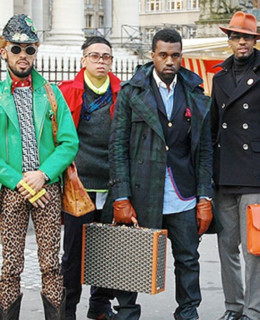My very first pair of All Stars featured a dragon print.
And I didn’t like it. It’s not like I had a choice though: the year was 2002 and after months of pleading, my mom finally set off to the store to buy her 14-year-old daughter the sneakers that would make her “one of the gals”. But things went horribly wrong at said store: mom got cast under a powerful spell of avant-garde styling ideals and, instead of going for the regular blue, mid-calf length pair I had requested, gave in to a pair of crisp white, knee-high sneakerboots with purple dragons emblazoned on the side and matching purple shoelaces. When she came home with a feverish look in her eyes and the magical shoes in her purse, I suffered a full-on OMG-I-just-wanted-to-blend-in-and-be-invisible panick attack and hid the shoes in the back of my closet, far away from the judgmental gaze of my adolescent peers. “You’re overreacting,” was mom’s reaction. “Give it a few years, and everybody will wànt to be a dragon!”
Flash forward to 2014 and her words proved to be somewhat prophetic: Manish Arora sends a horde of dragon tamers down the catwalk, complete with reptile-esque nose wings (!) and states that the scaled monster is finally ready to come out of the closet. In early 2018, Gucci turns away from handbags and has its models lovingly carrying their own heads and… baby dragons! “My models are human cyborgs,” explains head designer Alessandro Michele: “They symbolize the person we truly want to be, our deepest desires.” So now our desire is to be a dragon mother, casually carrying our scaled brood to the grocery store!? Givenchy also professes a love for dragons and prints them on hoodies with more street cred than North West’s signature buns. In their wake, of course, fast fashion chains are massively storing dragon prints and make sure at least one or two items per season now feature the mythical creature. And in the darkest regions of my closet, a pair of dragon-printed white-and-purple sneakers awakens after what seems like an age-long sleep, emanating a Jumanji-style pounding that grows louder and louder: tuduk-tuduk-tuduk-tuduk…!
The world of fashion isn’t the only one answering the call of dragons for that matter. While the merry dwarfs from The Hobbit still battle an old school treasure guarding beast named Smaug, Game of Thrones portrays a young girl who somewhat bizarrely becomes mother of dragons and uses them to show a world of armored macho men who’s the boss. It’s not a coincidence the show is one of the most popular of all times. Cartoons too erase the image of evil monsters as opposite to fair knights. Donkey falls head over heels in love with one in Shrek, resulting in a very cute breed of fire-breathing dronkeys, and dragons prove to be man’s loyal companion in the How To Train Your Dragon franchise. Talking bout a change of image!
For all that, the dragon has always been a symbol of fear, deep-rooted fear that goes back to the prehistory when we were helpless apemen, constantly on the lookout for deadly snakes or scaled monsters such as the crocodile. Scientists even found a hard-wired phobia of snakes in the brains of primates like the chimpansee. Humans are funny creatures though and we find ourselves drawn to fear and danger, feelings that provide us with thrill and kick. If the source of all this excitement doesn’t really exist and thus takes all actual risk away – think of dragons, zombies or vampires- it gets even more appealing. This explains our century-long obsession with dragons, but what about their bad rep?
A brief look on sages and legends across all cultures and ages uncovers one remarkable thing: while dragons have been linked to pure evil in the West, and the standard happy ending required one of them being slain (by an ongoing list of professionals ranging from Perseus to Saint George and a chap named Bard The Bowman), Eastern societies associate it with happiness, luck en prosperity. Dragons, just like fear, have throughout history been a useful instrument for authorities and the zeitgeist alike to control the masses. From the roman empire to the disaster of the nazis and even today’s political rhetoric: no need to illustrate the disastrous potential of fear in the hand of both good and bad leaders. Chinese emperors used dragons to portray their divine status and goodwill, whereas the catholic church made them the embodiment of evil.
What then explains the current PR-switch from bad guy to (fashion) icon? Easy: from wars to environmental disasters and disease, plus their immense human cost, we live in the scariest of times and people are looking for a way to cope with all that fear. Some escape to an alternate reality, which explains the humongous success of all things fantasy these days, while other try to conquer those fears. By bonding with fearsome (imaginary) creatures for instance, or taming them, or even making them their children. People want to be khaleesis instead of damsels in distress: tough little dragon queens ordering scary creatures to sit up and fetch, and maybe burn an enemy or two thousand -trying to conquer their most innate fears and looking smoking hot, no pun intended, while they’re at it.




